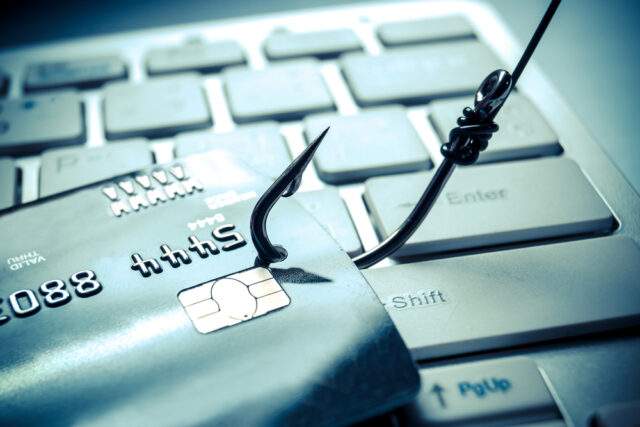What is smishing and how do you prevent it?
Read our guide to find out what smishing is, different types, why it’s a problem for organizations and how to prevent it.
Read our guide to find out what smishing is, different types, why it’s a problem for organizations and how to prevent it.

Technology is deeply embedded in our day-to-day lives. Our reliance on mobile phones for communication, conducting business, managing finances, and online shopping is undeniable.
Hackers are aware of this dependency, and they exploit it to their advantage. They execute smishing attacks – a deceptive technique that manipulates individuals into divulging sensitive information or performing detrimental actions.
In this blog, we’ll cover everything you need to know, including:
Smishing, a portmanteau of SMS and “phishing,” is a cyber attack technique that utilizes text messages to deceive and manipulate individuals into revealing sensitive information or performing harmful actions. It works by exploiting the trust people place in text messages and the ubiquity of mobile devices.
Here’s how smishing typically unfolds:
Smishing, phishing, vishing, and pharming sound similar because they all involve deceptive social engineering tactics to exploit individuals or organizations. The difference lies in the channel through which these attacks are carried out.
Let’s explore each form of attack in greater detail.
Smishing emerged as a cyber attack technique with the rise of mobile devices in the early 2000s. It targets individuals through text messages and is an adaptation of traditional phishing.
As mobile phones gained popularity, cybercriminals saw an opportunity to exploit the trust associated with text messages. Initially, smishing attacks involved sending deceptive texts to trick recipients into revealing sensitive information like passwords or financial details. Attackers often posed as legitimate organizations, enticing victims to click on malicious links or provide personal data.
Over time, smishing techniques have evolved, incorporating more sophisticated tactics. Attackers now use advanced social engineering techniques, such as creating urgency or fear, to increase the likelihood of success.
They may employ SMS spoofing or utilize malicious apps to deceive users. With the widespread adoption of mobile banking, online shopping, and various other services, smishing remains a prevalent threat.
Smishing can manifest in various forms. Here are some common types of smishing attacks:
Individuals receive text messages claiming to be from a legitimate organization, such as a bank or an online service provider. The message requests them to verify or update their account information by clicking on a link that leads to a fraudulent website designed to collect personal and financial details.
Cyber criminals send text messages notifying recipients that they have won a prize, gift card, or lucrative offer. The message urges them to claim the reward by following a link or replying with personal information.
This type of smishing preys on individuals’ desire for rewards or financial gain, tricking them into providing sensitive information or falling into other fraudulent schemes.
Attackers send messages pretending to be shipping companies or delivery services, informing recipients about an undelivered package or a failed delivery attempt.
The text message includes a link or a phone number for the recipient to reschedule the delivery or provide additional information. Clicking the link or contacting the given number may lead to scams or attempts to extract personal information.
This type of smishing targets banking or financial institution clients. Victims receive messages that appear to be from their bank, alerting them to suspicious account activity, a blocked card, or a pending transaction.
The text often prompts recipients to click on a link or call a specified number to resolve the issue. By doing so, victims may unwittingly disclose their account details, enabling the attackers to gain unauthorized access or conduct fraudulent transactions.
Exploiting individuals’ compassion, attackers send text messages soliciting donations for charitable causes or disaster relief efforts. The message may contain a link to an illegitimate donation page or a phone number to call for contributing.
Unsuspecting individuals who engage with these messages may end up providing their financial information to scammers or supporting fake charities.
Smishing goes further than betraying the trust and compromising the security of individuals; it poses significant risks and consequences for organizations as well.
Here are the main risks and challenges:
Data breaches put sensitive client or employee information at risk. If attackers gain access to login credentials, financial details, or other confidential data, they can exploit it for financial gain or sell it on the dark web.
Organizations may also face financial loss due to unauthorized transactions, fraudulent activities, or legal consequences.
If clients perceive that their personal information is not adequately protected, they may lose confidence in the organization’s ability to safeguard their data. Negative publicity, loss of clients, and a damaged brand image can have long-term implications for an organization’s success and viability.
Many industries have strict regulations regarding the protection of personal and financial data, such as the General Data Protection Regulation (GDPR) in the European Union. In the event of a successful attack, organizations may face legal consequences, fines, or other regulatory actions.
Smishing attacks can disrupt an organization’s operations, particularly if they involve the distribution of malware.
Malicious software can compromise systems, networks, or IT infrastructure, leading to service interruptions, data loss, or even a complete halt in operations. Recovering from such disruptions can be time-consuming and costly.
Responding to incidents requires dedicated resources, including cybersecurity experts, incident response teams, and digital forensic analysis. Organizations must invest in incident response services, planning, investigation, mitigation, and recovery efforts to minimize the impact of smishing attacks.
During the “Netflix Account Suspension” scam, attackers sent text messages to Netflix subscribers, posing as the streaming service.
They claimed imminent account suspension due to payment or verification issues. The messages included a link or phone number for recipients to resolve the problem.
Clicking the link or contacting the number directed victims to a fake Netflix login page or client support representative. Unsuspecting individuals provided their login credentials, payment information, or even Social Security numbers.
Attackers then harvested this sensitive data for identity theft, fraudulent transactions, or unauthorized account access. This smishing attack exploited trust and urgency, deceiving users into revealing personal and financial details.
Detecting smishing attacks can be challenging since attackers often employ tactics to make their messages appear genuine. However, here are some tips to help individuals detect smishing attempts:
Prevention is the best defense against smishing attacks. To minimize potential risks, a swift response is essential. Here’s what you should do:
Preventing smishing attacks requires a combination of proactive measures and robust security practices. Here are some essential steps to help you prevent smishing attacks:
An unexpected notification can spark excitement, invoke fear, or raise curiosity, but it can also be a red flag for a smishing attack. Individuals and organizations must understand the tactics hackers use and maintain a constant state of vigilance against manipulative behaviors.
Adopting a proactive approach is the best way to mitigate the possible risks of a smishing attack. And what better way to do so than with an experienced team of cybersecurity experts by your side? To learn more about smishing or our phishing attack simulation service, contact a member of our team.

What is phishing and how can you prevent it?
Read our complete guide to learn what phishing is, different types of attack, how it works and how to prevent it

Vishing: everything you need to know
Read our guide to find out what vishing is, how it works, why it exists & how to identify, respond to, recover from & prevent it.

What is spear phishing and how do you prevent it?
Read our guide to find out what spear phishing is, why it’s a problem for organizations and how to prevent it.